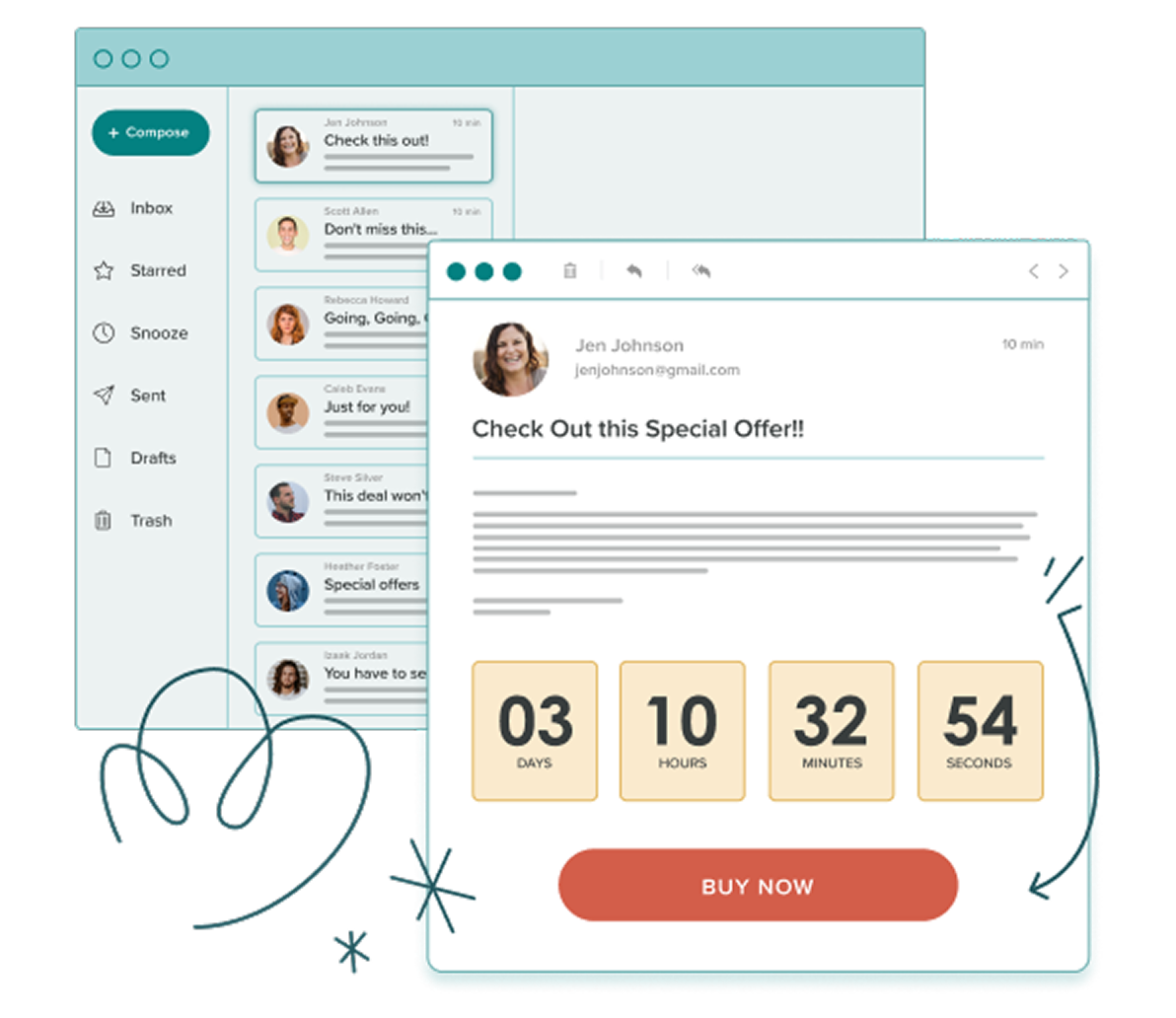We’ve partnered with Nicholas to offer you a 30-day trial of Deadline Funnel!
"Deadline funnel is a great way to authentically add some urgency to your landing pages and get more sales."
With authentic countdown timers synced across your emails and website / sales funnel pages, you can communicate the real deadline your leads need to know to urge them to make a purchase decision.
Take complete control over how and when your audience
sees your special offer. Marketing is your story – and
you’re in the driver’s seat.
Select the type of timer you’d like to display on your sales
funnel, website pages and emails. With four different
options to choose from, you’ll be sure to find a style that
works for your promotion.
Select a blueprint when creating your campaign. We’ll give
you the exact steps on how to set everything up –
completely personalized to your web and email platforms.
Understand the numbers behind each of your campaigns.
With easy reporting, you can quickly see how many people
engage your campaign as well as revenue generated.
Deadline Funnel integrates with the website and email apps that you use in your business. Create amazing offers for your audience on the platforms where you’re already connected.
Learn more

As a creator, you have unique experience and a special vision that you
want to share with your audience.
The people you serve LOVE your information, your vision, and your passion
for making their lives better.
However, to reach the largest audience you need more than passion.
You need consistent growth so you can build up your team without
feeling the stress of making payroll when revenue dwindles to zero
between launches.
Our mission is to help you cross the divide from where you are now to
where your business can be.
We built Deadline Funnel to help you generate consistent sales every day.

We built Deadline Funnel to help you motivate people to get off the fence and join your program.
Because your ideal customers need to hear your message and sometimes they need a little extra motivation to take the next step.
However, to reach the largest audience you need more than passion.
With Deadline Funnel you’ll persuade more people to become customers and you’ll bring in the revenue you’ll use to spread your message further.
We don’t see it as our job to just teach you Deadline Funnel…
We consider our job to help you grow your business as big as it can get and attract as many customers as you can.
I'm a big fan of Deadline Funnel. We use it in our own business. We've put it on our sales pages, do it for our launches that we're able to turn evergreen, on our summits and events. And we've put through over a hundred thousand dollars' worth of sales when using the Deadline Funnel, and so I know it works. It actually has given us a big uptick in our conversion numbers when we use it versus when we don't. And there's a great support network with Deadline Funnel, which is one of the best parts of this service. Really responsive, really good at giving you specific feedback for your needs. So highly recommend, not just the product, but also their service as well.
We're using Deadline Funnel in our business right now and are going to continue to use it more and more because we're seeing that it's working.


When you start to automate your marketing, it makes your life a little bit easier, and I couldn't have done that without Deadline Funnel.
On that autowebinar funnel, I used Deadline Funnel. It was amazing. By the way, those listening and watching right now, I'm not paid to say that. That's actually the truth.

Deadline Funnel enables us to help people achieve their dream to get started in property with little money.

Deadline Funnel is a software that pretty much every major online marketer I know uses. Deadlines drive action.

Deadline Funnel helped me make my first $10 million.
Deadline Funnel has probably made me, in addition to our regular income, a quarter of a million dollars.

I don't know a better tool than Deadline Funnel to really help with creating urgency.
Deadline Funnel allows me to offer valid promotions with real scarcity. It brings integrity to my business, which is a non-negotiable!

We've been using Deadline Funnel for years in our business and wouldn't be here without them.

Deadline Funnel is the one piece of software that we’ve used in all phases of growth. We’ve brought in probably over 5 million bucks of business.
